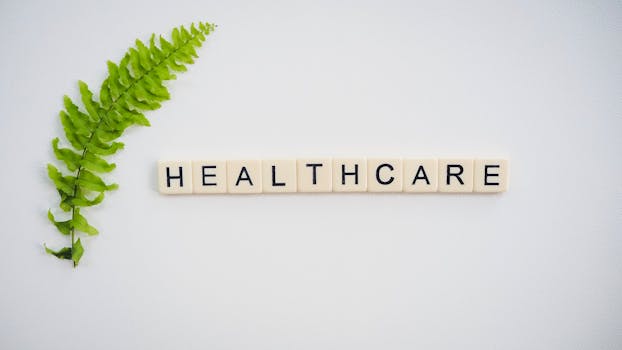One of the most critical aspects of settling in a new country is understanding how the healthcare system works. Healthcare access affects everything from emergency support to chronic disease management to your child’s vaccinations. But for new immigrants, the process can be confusing—systems vary widely, and even basic steps like finding a doctor or filling a prescription can feel unfamiliar.
This guide explains how healthcare systems operate in several major immigration destinations and what newcomers need to do in their first months to ensure access to care.
United States
The U.S. does not have a universal healthcare system. Instead, it relies on a mix of private insurance, employer-sponsored plans, and government programs (like Medicaid or Medicare).
Key points for immigrants:
- There is no automatic coverage—you must purchase a plan or qualify for public assistance
- The Affordable Care Act (ACA) marketplace offers subsidized options based on income and immigration status
- Some states offer expanded Medicaid for eligible low-income residents (immigrants may qualify after 5 years of residency)
- Emergency care must be provided regardless of immigration status, but bills can be high
Action steps:
- Apply for a Social Security Number (SSN) to enroll in most plans
- Use Healthcare.gov or your state marketplace to compare coverage
- Ask about community health centers that offer sliding-scale services
Canada
Canada offers universal healthcare, but access depends on your province and immigration status.
Key points:
- Permanent residents and many work/study permit holders are eligible for provincial healthcare
- There’s often a 3-month waiting period after arrival (varies by province)
- Services typically include doctor visits, hospital care, and diagnostic tests—but not prescriptions or dental
Action steps:
- Apply for your provincial health card (e.g., OHIP in Ontario, MSP in BC)
- Consider private insurance to cover the waiting period or non-covered services
- Register with a family doctor or clinic once approved
United Kingdom
The UK’s National Health Service (NHS) offers publicly funded healthcare to all legal residents.
Key points:
- Visa applicants staying more than 6 months must pay the Immigration Health Surcharge (IHS) when applying
- After paying the IHS, you’re entitled to NHS services at no additional cost
- You need to register with a General Practitioner (GP) to access non-emergency services
Action steps:
- Bring your Biometric Residence Permit (BRP) and proof of address to register with a GP
- Use NHS 111 for non-urgent advice or to find services near you
Germany
Germany requires all residents—including immigrants—to have health insurance.
Key points:
- Choose between statutory (public) insurance and private insurance (if eligible)
- Most employees are automatically enrolled in public insurance via payroll
- Freelancers and students may need to purchase private insurance
Action steps:
- Choose a Krankenkasse (health fund) during your residence registration process
- Submit your insurance confirmation with your visa or residence permit
- Visit a Hausarzt (general practitioner) for referrals and non-emergency care
Australia
Australia has a public healthcare system (Medicare) and a robust private sector.
Key points:
- Permanent residents and citizens are covered by Medicare
- Temporary visa holders (students, skilled workers) are usually required to hold private health insurance
Action steps:
- Apply for a Medicare card (if eligible) via Services Australia
- If on a temporary visa, shop for Overseas Visitor Health Cover (OVHC) or Overseas Student Health Cover (OSHC)
- Use bulk-billing clinics to avoid out-of-pocket fees
Portugal
Portugal offers a public healthcare system (SNS) that provides low-cost care to residents.
Key points:
- Once you obtain a residence permit, you’re eligible for public healthcare
- Services are provided through local health centers (centros de saúde) and public hospitals
Action steps:
- Register at your local health center with your residence permit and social security number
- Get a family doctor assigned for ongoing care
France
France offers universal healthcare through its public system (l’Assurance Maladie).
Key points:
- Most residents are eligible after 3 months of legal residence
- Healthcare is partially reimbursed, with patients paying a portion of costs
- Private supplemental insurance (mutuelle) covers the rest
Action steps:
- Register with the social security system to get a carte vitale
- Choose a primary doctor for coordinated care
- Apply for a mutuelle to reduce out-of-pocket expenses
Common Documents You’ll Need for Healthcare Access
- Proof of identity (passport, residence permit)
- Proof of address
- National insurance or tax ID number
- Health insurance policy or registration confirmation
- In some cases, translated medical history or vaccination records
Tips for Navigating Any Healthcare System as a Newcomer
- Bring a translated list of medications and prior conditions
- Learn how to call for emergency help (e.g., 911 in the U.S., 112 in Europe)
- Ask if your clinic or hospital offers language support or translation services
- If your country uses referrals, understand the process of seeing a specialist
- Use official government websites for accurate and up-to-date healthcare info
Healthcare doesn’t have to be intimidating—even if it’s vastly different from what you’re used to. As a newcomer, your goal is to secure access early, stay informed, and be proactive about your health.
Each system has its strengths and quirks, but with the right paperwork and preparation, you can receive the care you need without added stress. Take the time to register, ask questions, and connect with trusted local clinics or doctors. Your health—and peace of mind—are worth it.


